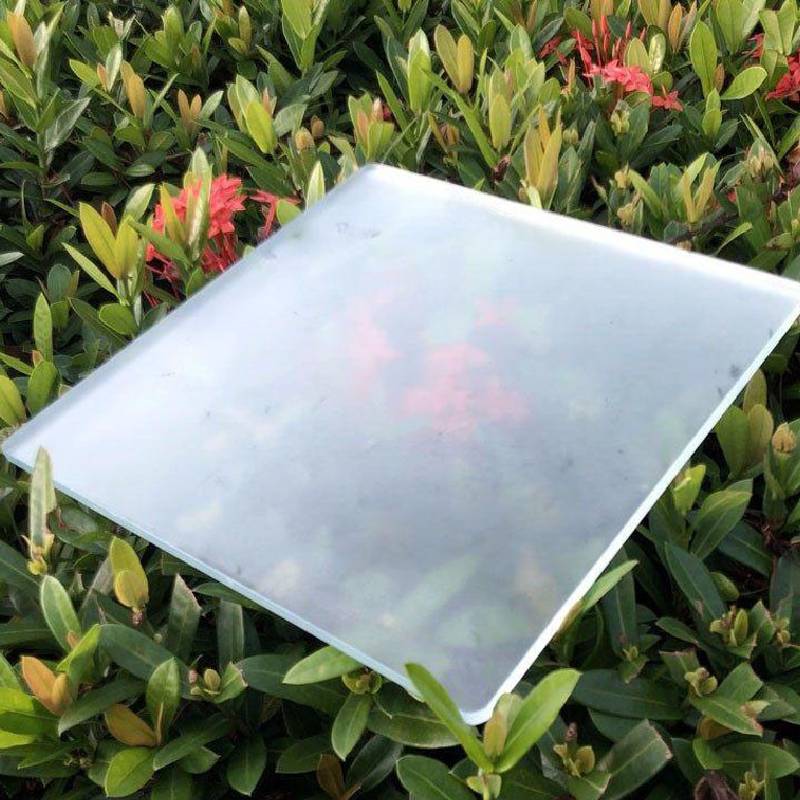The Properties and Applications of Heat Treated Glass
Heat treated glass, often referred to as tempered glass, has become increasingly popular in various industries due to its enhanced strength and safety features. This specialized type of glass undergoes a unique thermal process that allows it to resist thermal stresses and endure higher loads compared to regular glass. Understanding the properties, production process, and applications of heat treated glass can provide valuable insights into why it is favored in both commercial and residential contexts.
Production Process
The production of heat treated glass involves a carefully controlled heating and cooling process. Initially, the glass is heated to temperatures ranging from 600 to 700 degrees Celsius. This heating causes the surface of the glass to become much stronger than that of regular glass, as the outer layers are put into a state of compression. After reaching the desired temperature, the glass is rapidly cooled in a process known as quenching, which solidifies the surface while the interior remains somewhat pliable. This dual-state structure is what gives tempered glass its characteristic strength.
The quenching also induces stresses within the glass that allow it to withstand impacts. As a result, heat treated glass can be four to five times stronger than its untreated counterparts. It is worth noting that should tempered glass break, it shatters into small, blunt pieces rather than sharp shards, reducing the risk of injury.
Properties of Heat Treated Glass
Heat treated glass possesses several distinctive properties that make it a preferred choice for many applications. Firstly, its high strength and resistance to thermal shock are notable. This means it can be used in environments where it is exposed to sudden temperature changes, such as shower doors or glass shopfronts.
Another important feature is its safety profile. As mentioned, the way tempered glass breaks minimizes the risk of serious injury, making it ideal for high-traffic areas or locations where children are present. Furthermore, heat treated glass can also be manufactured with various coatings that enhance its performance in terms of UV protection, glare reduction, and energy efficiency.
heat treated glass
Additionally, tempered glass has excellent optical clarity and can be made in various thicknesses and sizes, offering versatility in design and functionality. These features make it suitable for a variety of architectural and interior design applications.
Applications
The applications of heat treated glass are manifold. In architecture, it's commonly used in facades, skylights, and glass curtain walls. Its strength allows for large panels that can enhance the aesthetic appeal of buildings while providing natural light and energy efficiency.
In the automotive industry, tempered glass is utilized in side and rear windows, where safety and strength are paramount due to the potential for impact and temperature changes. By incorporating heat treated glass, manufacturers ensure that vehicles meet safety regulations while offering passengers protection.
Moreover, the use of heat treated glass is prevalent in the kitchen and bathroom. Shower enclosures, glass countertops, and oven doors are frequently made from tempered glass due to their ability to withstand high temperatures and impacts, thus ensuring safety and durability.
The retail and commercial sectors also benefit from the use of heat treated glass in store displays, glass doors, and partitions. The aesthetic qualities of heat treated glass combined with its strength make it an attractive choice for creating a modern and inviting shopping environment.
Conclusion
In summary, heat treated glass serves as an essential material across multiple industries for its robust properties and safety advantages. Its unique production process imbues it with strength, thermal resistance, and a safe breaking pattern, making it an ideal choice for both design and functionality. As advancements in technology continue to evolve, the potential for more innovative applications of heat treated glass remains vast, promising to enhance our built environments further.
 Afrikaans
Afrikaans  Albanian
Albanian  Amharic
Amharic  Arabic
Arabic  Armenian
Armenian  Azerbaijani
Azerbaijani  Basque
Basque  Belarusian
Belarusian  Bengali
Bengali  Bosnian
Bosnian  Bulgarian
Bulgarian  Catalan
Catalan  Cebuano
Cebuano  Corsican
Corsican  Croatian
Croatian  Czech
Czech  Danish
Danish  Dutch
Dutch  English
English  Esperanto
Esperanto  Estonian
Estonian  Finnish
Finnish  French
French  Frisian
Frisian  Galician
Galician  Georgian
Georgian  German
German  Greek
Greek  Gujarati
Gujarati  Haitian Creole
Haitian Creole  hausa
hausa  hawaiian
hawaiian  Hebrew
Hebrew  Hindi
Hindi  Miao
Miao  Hungarian
Hungarian  Icelandic
Icelandic  igbo
igbo  Indonesian
Indonesian  irish
irish  Italian
Italian  Japanese
Japanese  Javanese
Javanese  Kannada
Kannada  kazakh
kazakh  Khmer
Khmer  Rwandese
Rwandese  Korean
Korean  Kurdish
Kurdish  Kyrgyz
Kyrgyz  Lao
Lao  Latin
Latin  Latvian
Latvian  Lithuanian
Lithuanian  Luxembourgish
Luxembourgish  Macedonian
Macedonian  Malgashi
Malgashi  Malay
Malay  Malayalam
Malayalam  Maltese
Maltese  Maori
Maori  Marathi
Marathi  Mongolian
Mongolian  Myanmar
Myanmar  Nepali
Nepali  Norwegian
Norwegian  Norwegian
Norwegian  Occitan
Occitan  Pashto
Pashto  Persian
Persian  Polish
Polish  Portuguese
Portuguese  Punjabi
Punjabi  Romanian
Romanian  Russian
Russian  Samoan
Samoan  Scottish Gaelic
Scottish Gaelic  Serbian
Serbian  Sesotho
Sesotho  Shona
Shona  Sindhi
Sindhi  Sinhala
Sinhala  Slovak
Slovak  Slovenian
Slovenian  Somali
Somali  Spanish
Spanish  Sundanese
Sundanese  Swahili
Swahili  Swedish
Swedish  Tagalog
Tagalog  Tajik
Tajik  Tamil
Tamil  Tatar
Tatar  Telugu
Telugu  Thai
Thai  Turkish
Turkish  Turkmen
Turkmen  Ukrainian
Ukrainian  Urdu
Urdu  Uighur
Uighur  Uzbek
Uzbek  Vietnamese
Vietnamese  Welsh
Welsh  Bantu
Bantu  Yiddish
Yiddish  Yoruba
Yoruba  Zulu
Zulu 

